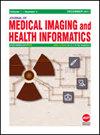Technological Hindrances of Behavioral Medicine Patient Access: A Literature Review
Journal of Medical Imaging and Health Informatics
Pub Date : 2020-01-01
DOI:10.37421/2157-7420.2020.11.343
引用次数: 0
Abstract
Technology is a pervasive tool utilized throughout inpatient and outpatient hospital care. Behavioral medicine has a plethora of technology to integrate and support medical infrastructure and processes. A systematic literature review was performed to classify the technological hinderances that specifically plague behavioral medicine. Researchers examined articles contained within the databases of CORE, Elsevier, PubMed, ResearchGate, and ScienceOpen and pulled all relevant articles. A total of 85 articles were collected after the removal of duplicates. Several themes have been identified in the systematic literature review that negatively affects behavioral medicine treatment at the provider, clinical staff, non-clinical staff, patient, and organizational levels. These themes are a lack of behavioral medicine patient resources, a surfeit of stigmas surrounding treatment, higher levels of comorbidities in these patients as compared to non-behavioral medicine specialties, and a reliance on outdated educational protocols for training staff. The themes significantly affect patients within the behavioral medicine specialty more than other subsectors of medicine due to the unique ailments that behavioral medicine encompasses. The future climate of behavioral medicine treatment could be affected by the aforementioned hinderances. However, evidence in the literature review displays positive findings when employee education and technological integration are combined. Further research should be directed towards the implementation of SBE into clinical and non-clinical behavioral medicine employee training.行为医学患者获取的技术障碍:文献综述
技术是医院住院和门诊护理中普遍使用的工具。行为医学有大量的技术来整合和支持医疗基础设施和流程。我们进行了系统的文献综述,对具体困扰行为医学的技术障碍进行了分类。研究人员检查了CORE、Elsevier、PubMed、ResearchGate和ScienceOpen数据库中的文章,并提取了所有相关文章。去除重复后共收集85篇文献。在系统的文献综述中,已经确定了几个主题,这些主题在提供者、临床工作人员、非临床工作人员、患者和组织层面对行为医学治疗产生负面影响。这些主题是缺乏行为医学患者资源,围绕治疗的耻辱过多,与非行为医学专业相比,这些患者的合并症水平更高,以及依赖过时的教育协议来培训员工。由于行为医学包含独特的疾病,这些主题对行为医学专业的患者的影响比其他医学子部门更大。行为医学治疗的未来气候可能受到上述障碍的影响。然而,当员工教育和技术整合相结合时,文献综述中的证据显示出积极的结果。进一步的研究应针对在临床和非临床行为医学员工培训中实施SBE。
本文章由计算机程序翻译,如有差异,请以英文原文为准。
求助全文
约1分钟内获得全文
求助全文
来源期刊

Journal of Medical Imaging and Health Informatics
MATHEMATICAL & COMPUTATIONAL BIOLOGY-RADIOLOGY, NUCLEAR MEDICINE & MEDICAL IMAGING
自引率
0.00%
发文量
0
审稿时长
6-12 weeks
期刊介绍:
Journal of Medical Imaging and Health Informatics (JMIHI) is a medium to disseminate novel experimental and theoretical research results in the field of biomedicine, biology, clinical, rehabilitation engineering, medical image processing, bio-computing, D2H2, and other health related areas. As an example, the Distributed Diagnosis and Home Healthcare (D2H2) aims to improve the quality of patient care and patient wellness by transforming the delivery of healthcare from a central, hospital-based system to one that is more distributed and home-based. Different medical imaging modalities used for extraction of information from MRI, CT, ultrasound, X-ray, thermal, molecular and fusion of its techniques is the focus of this journal.
 求助内容:
求助内容: 应助结果提醒方式:
应助结果提醒方式:


